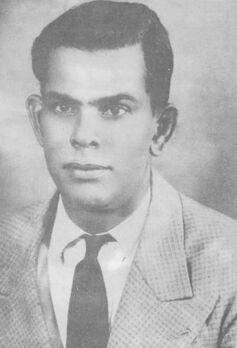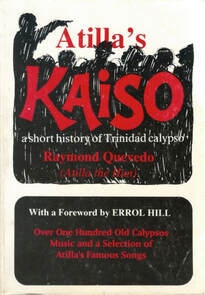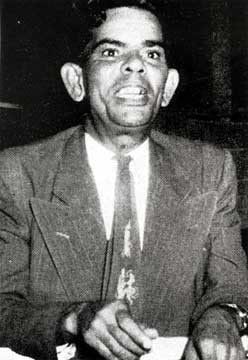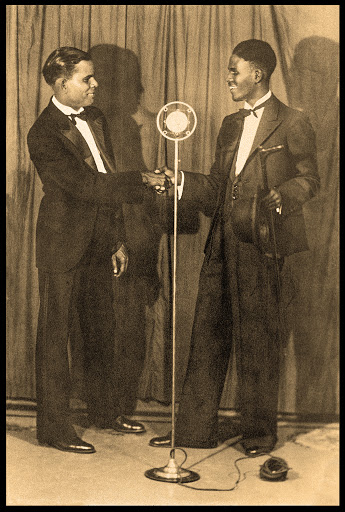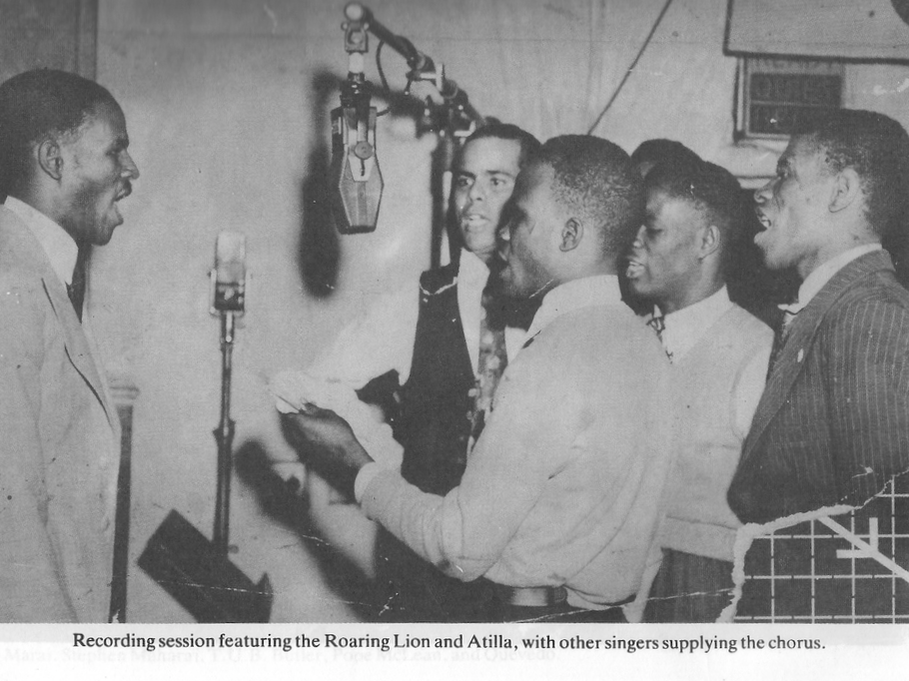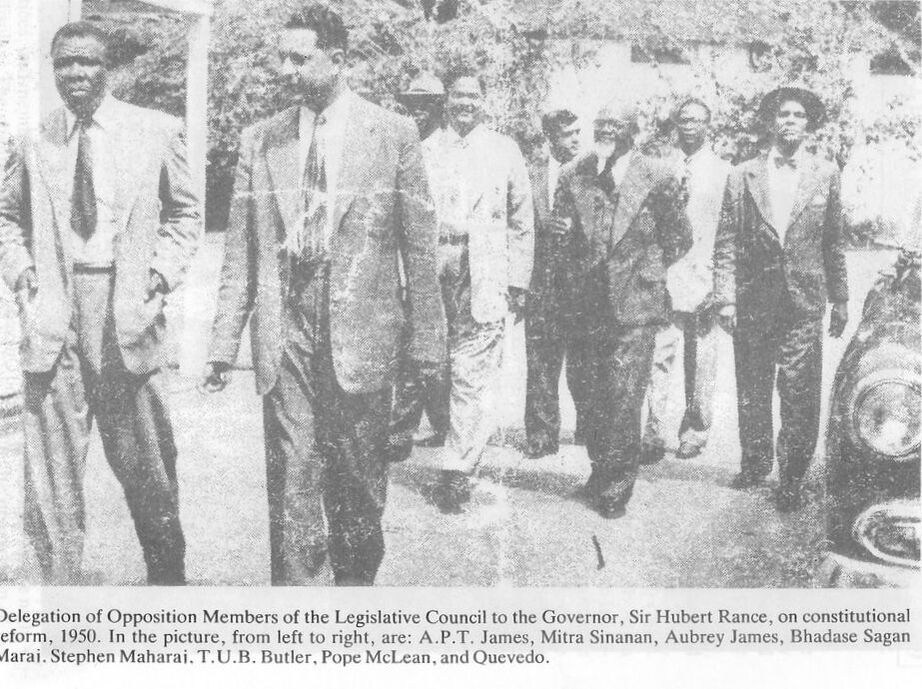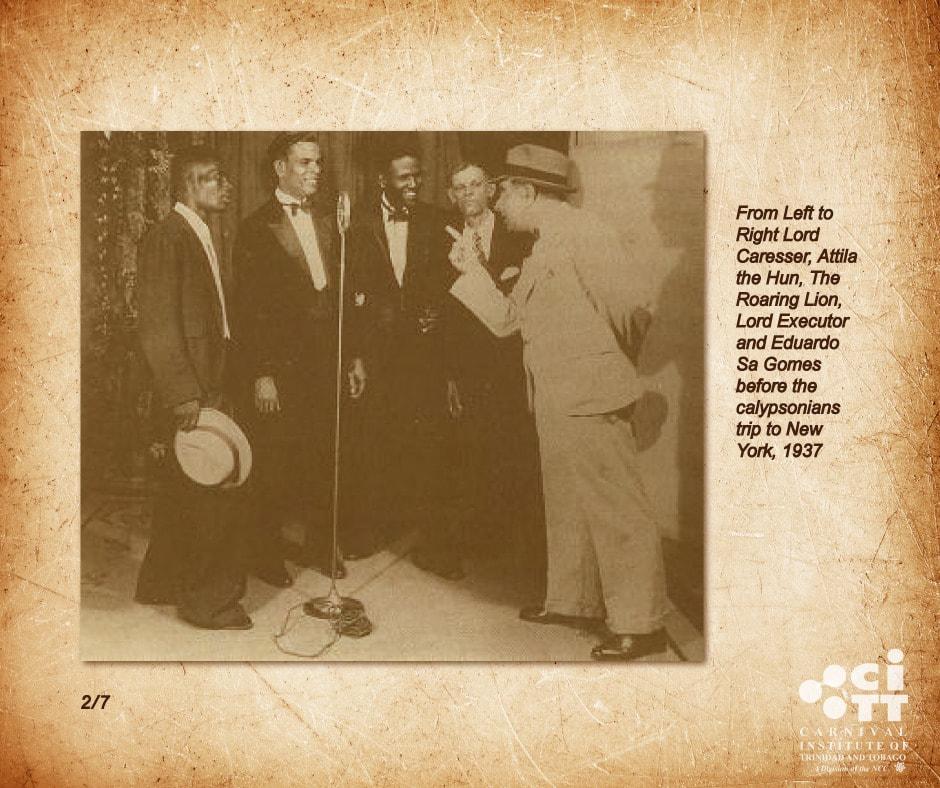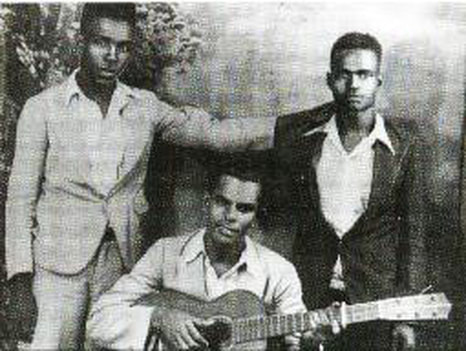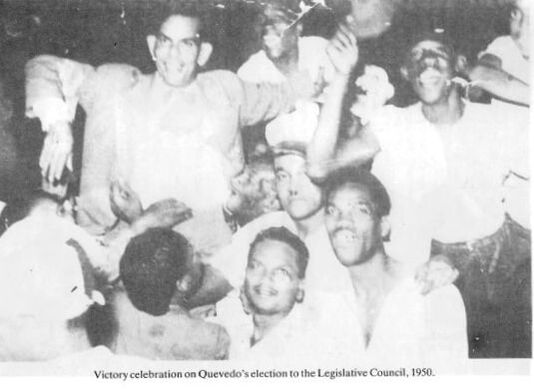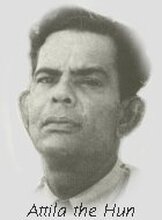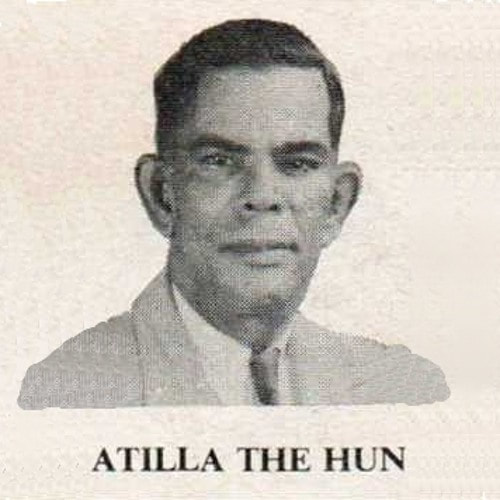Browse by family names
Browse family names using the A to Z index below.
A B C D E F G H I J K L M N O P Q R S T U V W XYZ ALL NAMES
Q.
QUEVEDO, RAYMOND (aka Atilla the Hun) 1892-1962
A B C D E F G H I J K L M N O P Q R S T U V W XYZ ALL NAMES
Q.
QUEVEDO, RAYMOND (aka Atilla the Hun) 1892-1962
|
BIOGRAPHY
Raymond Quevedo (24 March 1892 – 22 February 1962), better known as Atilla the Hun, sang his first calypso publicly in 1911 as a chantwell (lead singer) for a Carnival band in Port of Spain, Trinidad. He was a leading Trinidad calypsonian for almost half-a-century, being at his most prominent in the 1930s and 1940s when he sang at the Original Old Brigade Tent. He was one of the pioneers in spreading awareness of calypso beyond its birthplace in Trinidad and Tobago. Together with the Roaring Lion (Rafael de Leon) he brought calypso to the United States for the first time in March1934 when Eduardo Sa Gomes, the Trinidad agent for Brunswick Records, sent Lion and Atilla to record calypsos in New York City. This arrangement was one of the defining moments in calypso history. While Lioenel Belasco, Wilmouth Houdini and others had recorded calypsos abroad before, this was the first time that locally based calypsonians traveled to New York "on contract" to record. |
Atilla and Lion's recording session was successful and proved to be the start of a 10-year annual flow of calypsonians to the US. While in New York City, Lion and Atilla also appeared on the Rudy Vallee's Fleishman's Variety Hour radio show on WEAF on March 8th 1934 that was heard, though just barely and with great static, on shortwave in Trinidad. The singers also appeared as part of the floor show at Vallee's Hollywood Cafe on Broadway in Manhattan and performed for President Roosevelt at a charity function at the Waldorf Astoria.
In 1935, Atilla formed the Keskidee Trio along with Tiger and Lord Beginner and they recorded Congo Bara / Duke And Duchess Of Kent, accompanied by Gerald Clark and His Caribbean Serenaders. They also recorded the ever-popular Don't Le' Me Mother Know.
One of Atilla's popular calypsos was "FDR in Trinidad", commemorating U.S. President Franklin Delano Roosevelt's 1936 trip to Trinidad. Atilla competed in the first Calypso King contest in 1939, and won the title in both 1946 and 1947. When several of his records were censored he composed "The Banning of Records," which was itself banned. The melody of Atilla’s “Calypso Behind The Wall” was popularised by American singer Harry Belafonte who recorded it as “Jump In The Line.”
Known as a defender of the poor, Atilla was able to transition to a political career. As the first calypsonian to hold elected public office, he became an elected member of the Port of Spain City Council in 1946 and Deputy Mayor. He later became President General of the Trinidad Labour Party and served on the Carnival Improvement Committee, the Railway Board, and other civic organisations. In1950, he was elected to the Legislative Council of Trinidad and Tobago, representing the St. George County East.
Atilla the Hun died in 1962 at the age of 69. He was posthumously awarded the Public Service Medal of Merit in 1972.
In 1935, Atilla formed the Keskidee Trio along with Tiger and Lord Beginner and they recorded Congo Bara / Duke And Duchess Of Kent, accompanied by Gerald Clark and His Caribbean Serenaders. They also recorded the ever-popular Don't Le' Me Mother Know.
One of Atilla's popular calypsos was "FDR in Trinidad", commemorating U.S. President Franklin Delano Roosevelt's 1936 trip to Trinidad. Atilla competed in the first Calypso King contest in 1939, and won the title in both 1946 and 1947. When several of his records were censored he composed "The Banning of Records," which was itself banned. The melody of Atilla’s “Calypso Behind The Wall” was popularised by American singer Harry Belafonte who recorded it as “Jump In The Line.”
Known as a defender of the poor, Atilla was able to transition to a political career. As the first calypsonian to hold elected public office, he became an elected member of the Port of Spain City Council in 1946 and Deputy Mayor. He later became President General of the Trinidad Labour Party and served on the Carnival Improvement Committee, the Railway Board, and other civic organisations. In1950, he was elected to the Legislative Council of Trinidad and Tobago, representing the St. George County East.
Atilla the Hun died in 1962 at the age of 69. He was posthumously awarded the Public Service Medal of Merit in 1972.
Atilla's Kaiso: A Short History of Trinidad Calypso with John La Rose, which he completed in the mid-50s, was published posthumously in 1983 via the University of the West Indies School of Continuing Students and with the financial support of LJ Williams and Company Ltd. According to an excerpt from the book's foreword by Errol Hill:
|
| |||||
Biography compiled from various sources, including Atilla's Kaiso, The Roaring Lion Calypso Foundation, Ray Funk, and Wikipedia.
DOCUMENTS
TIMELINE
FILM/VIDEO RECORDINGS
|
|
|
|
|
|
PHOTOGRAPHS
DISCOGRAPHY
TRANSCRIPTIONS
|
|
VIDEOS
ADDITIONAL ONLINE SOURCES
Attila the Hun – Roosevelt in Trinidad
Calypsos From Trinidad: Politics, Intrigue & Violence in the 1930s (Liner Notes)
Discogs.com
Discography of American Historical Recordings
Library of Congress
Ol’ time calypso: long time music
The day the Graf Zeppelin flew by
The Golden Age of Calypso
The Mighty Atilla the Hun
PATOIS IN CALYPSO
Review of Atilla's Kaiso by Lise Winer (Login Required)
St. Mary's College Past Students
Virtual International Authority File
When the Graf Zeppelin visited Trinidad (1933)
Wikidata
Wikipedia
BIBLIOGRAPHY
Attila the Hun – Roosevelt in Trinidad
Calypsos From Trinidad: Politics, Intrigue & Violence in the 1930s (Liner Notes)
Discogs.com
Discography of American Historical Recordings
Library of Congress
Ol’ time calypso: long time music
The day the Graf Zeppelin flew by
The Golden Age of Calypso
The Mighty Atilla the Hun
PATOIS IN CALYPSO
Review of Atilla's Kaiso by Lise Winer (Login Required)
St. Mary's College Past Students
Virtual International Authority File
When the Graf Zeppelin visited Trinidad (1933)
Wikidata
Wikipedia
BIBLIOGRAPHY
- Austin, R L (1976) 'Understanding Calypso Content: A Critique and an Alternative Explanation'. Caribbean Quarterly, Vol. 22, Nos. 2 & 3, pp. 74-83.
- Crowley D J (1959) 'Towards a Definition of Calypso'. Ethnomusicology. Vol. 3, No. 2 pp. 57-66, No. 3. pp. 117-124.
- Crowley, D J (1966) 'Folk Etymology and the Earliest Documented Usage of 'Calypso'' Ethnomusicology, Vol. 10, No. I, pp. 81-82.
- Elder, J D (1968) 'The Male/Female Conflict in Calypso'. Caribbean Quarterly, Vol. 14, No. 3, pp. 23-41.
- Hall, B & Noblett, R A (1979) 'The Birth of the Boogie'. Blues Unlimited, No. 133, January/February, pp. 10-11.
- Hill, E (l967) 'On the Origin of the Term Calypso'. Ethnomusicology, Vol. 11, No. 3, pp. 359-367.
- Midgett, D K (1977) 'Performance Roles and Musical Change in a Caribbean Society'. Ethnomusicology, Vol. 21, No. 1, pp. 55-73. 0
- Pearse, A (1956) 'Mitto Sampson on Calypso Legends of the 19th Century'. Caribbean Quarterly, Vol. 4, Nos. 3 & 4, pp. 250-262.
- Warner, K (1983) The Trinidad Calypso. Heinemann.
- Winer, Lise (1986) Socio-Cultural Change and the Language of Calypso “, New West Indian Guide 60.3 / 4 (1986): 117).
